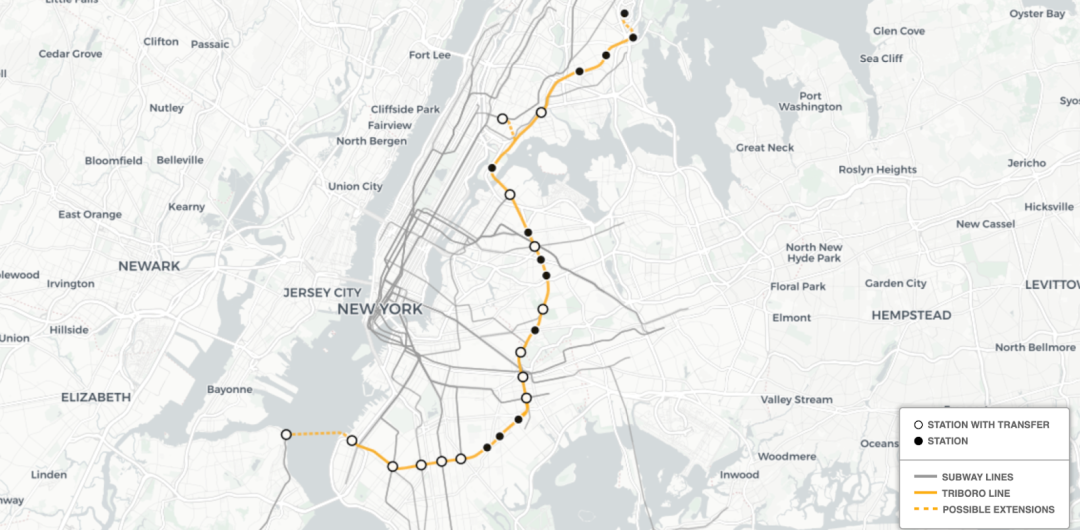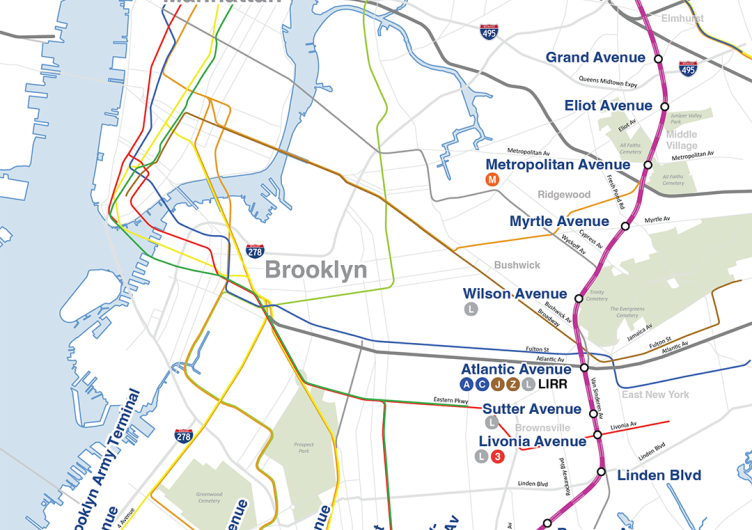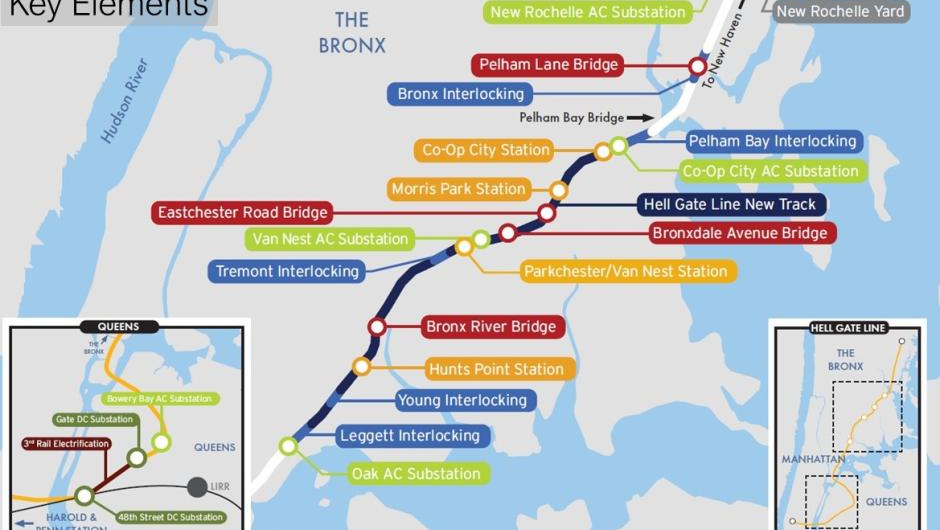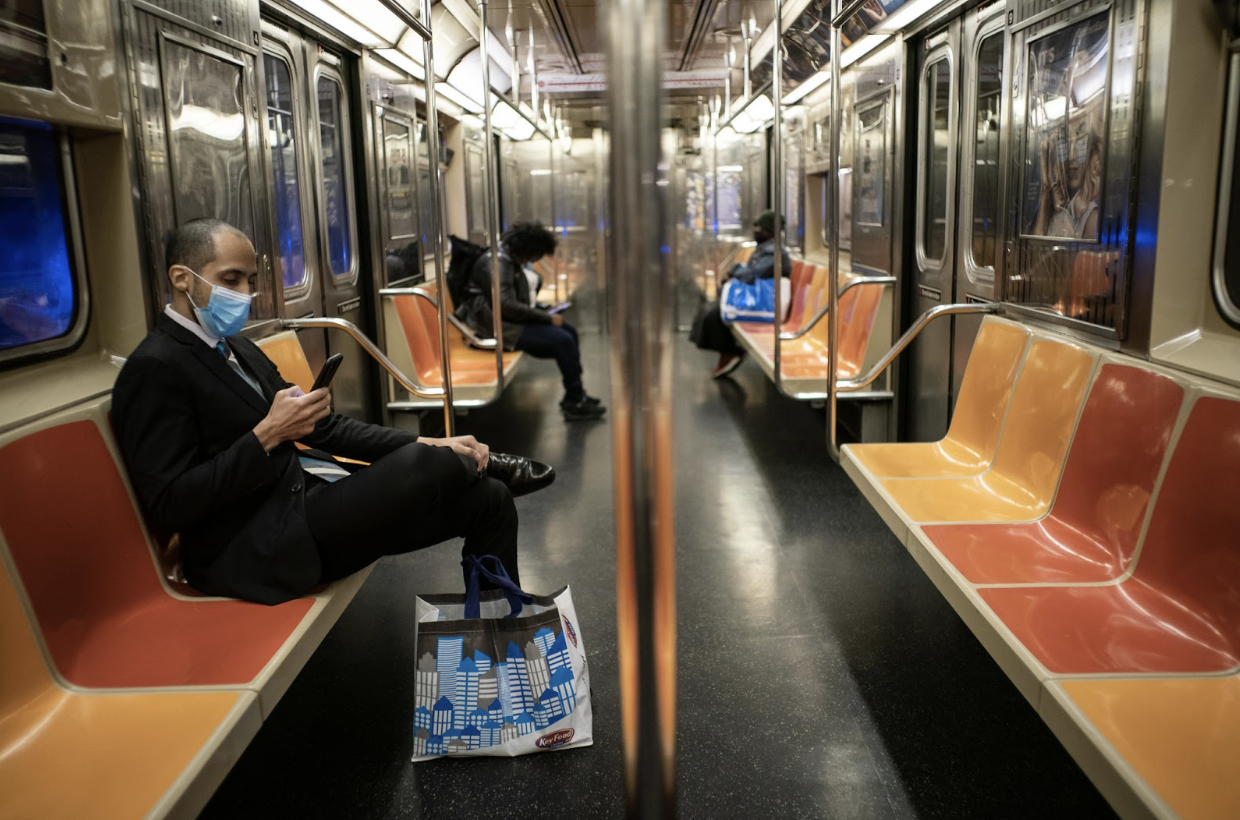Photo via the New York Times
***
The Interborough Express is a rapid transit project that is expected to be operational in the early 2030’s. In August of 2025, the project entered its design and engineering phase following Governor Kathy Hochul’s approval of $2.75 billion in funding as part of the 2025-2029 MTA Capital Plan.
The Interborough Express (IBX) is a proposed 14-mile 24/7 light metro line in New York City, running from Jackson Heights, Queens to Bay Ridge/Sunset Park, Brooklyn. It will create 19 stations and connect the A, C, E, N, Q, R, 2, 3, 5, 7, B, D, F, M, J, Z and L train lines, 50 bus routes, and two Long Island Railroad stations. According to Hochul, the direct connection between Brooklyn and Queens “will reduce travel times up to 30 minutes in either direction.”

Proposed Triboro RX Map, Image via RPA
***
The need for interborough transit improvement is nothing new. This idea has been in the works for decades with hopes of linking the city’s outer boroughs without commuting through Manhattan. Originally proposed as The Triborough Express and later known as the Triboro RX by the Regional Plan Association in 1996, the project once included the Bronx as a direct connecting point to Brooklyn and Queens. The original version would go over the Hell Gate Bridge, utilizing existing freight lines to create a crosstown rail link connecting Brooklyn, Queens, and the Bronx.
In 2022, Governor Kathy Hochul revived the transit proposal but reshaped it into what is now called the Interborough Express (IBX). Unlike the original Triboro RX plan, which envisioned service stretching from Brooklyn through Queens and into the Bronx, Hochul’s version cut the Bronx portion entirely.

Finalized Interborough Express Map, Image via the MTA
***
According to the Metropolitan Transportation Authority (MTA), the Bronx was cut from the project mostly because of Penn Station Access, a public works project underway in New York City. The project was originally planned to utilize the Hell Gate Bridge in order to connect the Bronx to Queens, but Penn Access will cause the Hell Gate Bridge to hit capacity once it is running Amtrak, freight, and Metro North trains as soon as 2028. As a result, an extension to the Bronx would require an entirely new bridge which is an unfeasible solution.
While the logistical and financial challenges are clear, this illustrates a broader issue: the neglect of the Bronx’s transit system. The Bronx is being left out of large scale interborough and cross borough transit projects while being one of the most transit-dependent boroughs with about 60% of households not owning a vehicle. This neglect stems from the city’s historical development patterns, which highly prioritized Manhattan-centric routes. The impacts are lasting, forcing residents to face long, unreliable commutes, usually through Manhattan when not necessary.
In the Bronx, most train services run north to south rather than east to west which prioritizes travel to Manhattan and other boroughs rather than travel within the Bronx itself. Similarly, the Hudson, Harlem, and New Haven Metro-North Railroad lines are designed primarily as commuter routes for suburban riders heading into Manhattan, rather than serving as reliable interborough connections.

Image via the MTA
***
The Penn Station Access Project provides East Bronx residents with quicker and more reliable access to Manhattan and Penn Station, yet the project also caters to commuters from Westchester County and Connecticut, highlighting the irony that a simple Bronx–Queens link remains unbuilt. All of the Bronx’s transportation systems require travel through Manhattan to get to any other borough in New York City, including Penn Station Access. This is with the exception of buses, which had an average speed of 8.64 mph in the Bronx in 2024. More than anything else, the Penn Station Access Project taking priority over the Bronx’s inclusion in the Interborough Express is a missed opportunity to serve outer borough residents first.
While Penn Station Access will certainly benefit Bronx commuters, it is a Manhattan-bound train which will continue to necessitate commuting through Manhattan. The project caters to suburban riders in Connecticut and Westchester County without addressing the idea that Bronx residents should have at least one direct and reliable train to Queens. This is an example of a pattern: projects that pass through the Bronx often serve outside communities more than the interests of the Bronx community itself, one of the most notorious examples of this being the Cross Bronx Expressway. Ultimately, while projects like Penn Station Access may bring New York City regional benefits, the convenience of outsiders seems to be prioritized over that of local residents.
***
This article was edited by Emma Saliasi and Karol Quinde.
